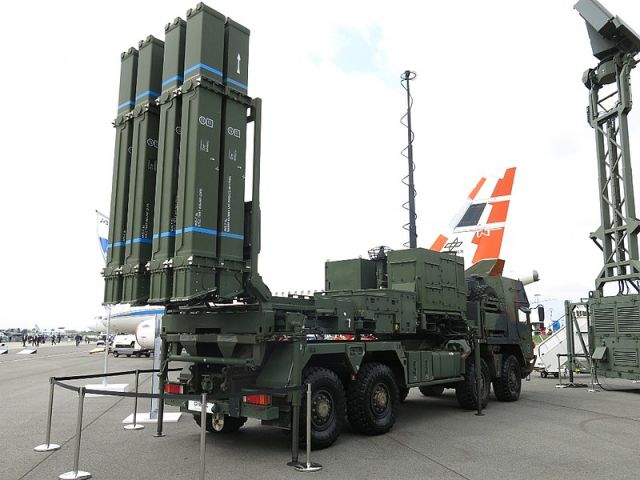Military expert Andrey Frolov — on whether Germany will supply IRIS-T SLM anti-aircraft systems to Ukraine
On June 1, German Chancellor Scholz announced plans to transfer IRIS-T anti-aircraft missile systems to the Armed Forces of Ukraine (AFU). The decision immediately caused increased attention, since for the first time it came to the supply of Western-made air defense systems to Ukraine. Before that, only portable complexes were supplied to Kiev. However, the sensation did not last long, as the Bundeswehr almost immediately reported that there was no such system in its warehouses.
With careful and calm consideration, Scholz's statement really raises a lot of questions. First of all, because this complex is essentially a prototype and is not mass—produced, its tests were completed only in January 2022. The IRIS-T SLS short-range air defense system (up to 10 km) was purchased in small quantities by Sweden and Norway (for integration into the NASAMS air defense system). The first buyer of the SAM in the SLM variant was Egypt, which ordered it back in 2018, but there were no physical deliveries yet. Germany itself did not purchase the complex serially. Accordingly, in the most ideal scenario, Berlin can only transfer to Kiev an experimental version with an unclear degree of serviceability after testing. Nevertheless, such a possibility has been stated, and it should be treated carefully.
The IRIS-T SLM complex is built around a modified IRIS air-to-air missile with an infrared homing head and additional radio command guidance (combined with inertial-satellite correction) on the main section of the trajectory. The range of fire in the anti—aircraft version reaches 40 km, in height - 20 km. This is a joint project of a number of European countries led by Germany, the head developer is the German company Diehl Defense. Serial deliveries of the aviation variant began in 2005. In combat, none of the variants of the SAM was used, so its combat effectiveness remains unknown.
The very fact that the NATO country announced the possibility of transferring the SAM to Ukraine may indicate that the Ukrainian air defense system, which was built around the Soviet S—300PS/PT, Buk—M1, Osa-AK/AKM complexes, apparently actually ceased to exist as a whole. Individual complexes have been preserved and certainly pose a threat. But they can cover individual objects, and on an irregular basis, acting in fact by organizing ambushes. Numerous MANPADS of Soviet and Western production pose the main threat to helicopters and attack aircraft, but, to the credit of Russian airborne defense systems, due to their work, the combat effectiveness of these means is also significantly reduced.
Therefore, the transfer of one or two batteries of an essentially stationary complex can only mean the cover of some particularly important object, most likely in the depths of the territory of Ukraine, and from Russian manned aircraft, and not precision weapons. An attempt to place it in the frontline zone will lead to very rapid destruction by the forces and means of the Russian Aerospace Forces. And its delivery will in no way be able to change the overall situation on the line of contact between the Armed Forces of Ukraine and Russian troops.
The issue of preparing Ukrainian calculations for this complex remains behind the scenes. Training takes quite a long time, and in the best case, Ukrainian operators will be ready in 2023. The probability of transferring these air defense systems to the so-called "wet leasing", when the complexes will be transferred to Ukraine together with German calculations, seems unlikely due to the lack of such in the Bundeswehr and enormous political risks.
A logical question arises: "What was it?". There are several answers to this question.
The first is Scholz's subtle revenge for the "liver sausage" and, in general, unwillingness to escalate the conflict by supplying Ukraine with really significant weapons. Despite numerous statements, the PzH2000 howitzers, the Marder 1A3 BMP and the Gepard ZSU have not yet been delivered to Ukraine. The IRIS-T SLM just added to the collection of unfulfilled German promises.
Another option may be another "scheme" played by the Germans. Its meaning is that the complex can be transferred not to Ukraine, but to any NATO or EU country in exchange for the shipment of a Soviet-made complex from there. Candidates in this case may be Greece, Cyprus and Finland, which are armed with Russian medium-range air defense systems. Something similar was proposed to Poland and Greece regarding their armored vehicles.
Finally, it may just be an advertising campaign of German weapons and military-industrial complex, which the Germans are taking advantage of the situation. Only narrow specialists knew about this SAM yesterday, but today the whole world has become aware of it. And this can work on its promotion to new markets, primarily in the Middle East or Asia.
Nevertheless, it is impossible to completely exclude the option of transferring any modern Western medium-range air defense systems to Ukraine. This will require the Russian army to take preventive measures to eliminate this threat even at the stage of transfer to deployment sites.
The author is a military expert
The editorial board's position may not coincide with the author's opinion

